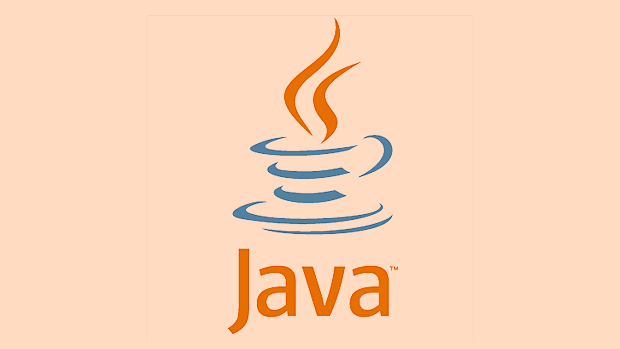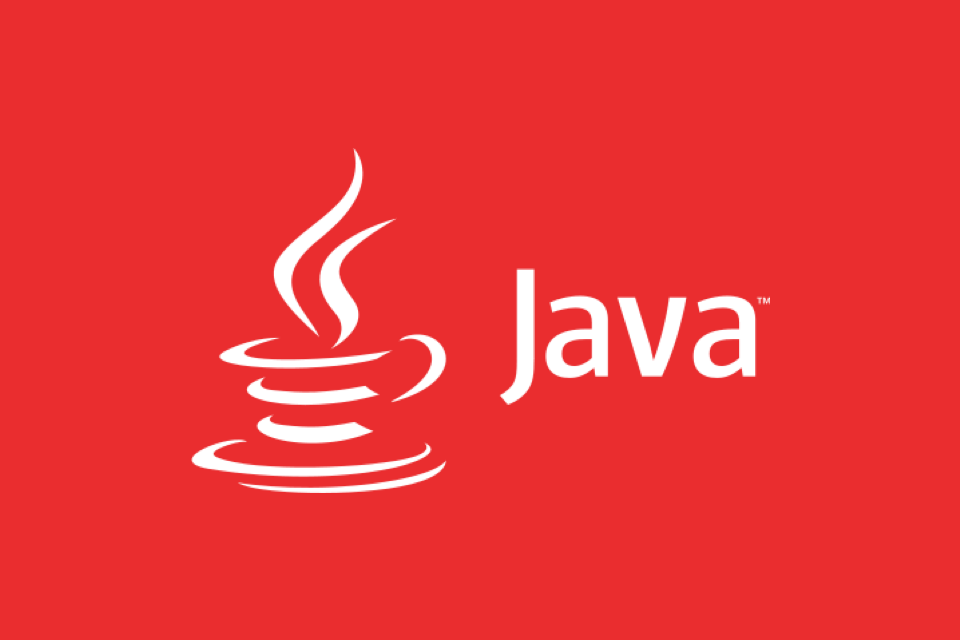How to use regular expressions in Java to validate an email?
Jul 23, 2025 am 12:50 AMThe method to verify the mailbox format in Java is to use regular expressions to match the Pattern and Matcher classes. 1. Use Pattern and Matcher classes: generate Pattern objects by compiling regular expressions, and then create Matcher objects to match input strings; 2. Mailbox regular structure: including user name part, domain name part and top-level domain name part, which can cover most legal mailbox formats; 3. Note: There is no need to pursue full compliance with RFC standards. Front and back-end double-factor verification should be taken into account, and third-party libraries such as Apache Commons Validator can be considered; 4. Sample test code: Write test methods to verify legal and illegal mailboxes to ensure accuracy.

Verifying the mailbox format is very common in actual development, and using regular expressions in Java is a common and effective way. The key is to write a regular expression that can override most legal mailbox formats and use Pattern and Matcher classes in Java correctly.

1. Use Java's Pattern and Matcher classes
Java provides the java.util.regex package to handle regular expressions. The basic process is:
- Compile regular expressions as
Patternobjects - Create a
Matcherwith thisPatternto match the input string
The sample code is as follows:

import java.util.regex.Pattern;
import java.util.regex.Matcher;
public class EmailValidator {
public static boolean isValidEmail(String email) {
String regex = "^[a-zA-Z0-9_ &*-] (?:\\.[a-zA-Z0-9_ &*-] )*@(?:[a-zA-Z0-9-] \\.) [a-zA-Z]{2,7}$";
Pattern pattern = Pattern.compile(regex);
Matcher matcher = pattern.matcher(email);
return matcher.matches();
}
} This regular expression can match most common email formats, such as: user.name@example.com , user_name123@sub.domain.co.uk , etc.
2. Structure description of mailbox regular expressions
The above regular expression can be broken down into several parts to understand:

-
^[a-zA-Z0-9_ &*-]: Match the username part of the mailbox, allowing letters, numbers, underscores, plus signs, asterisks and hyphens -
(?:\\.[a-zA-Z0-9_ &*-] )*: Allows usernames to include dots, but cannot be continuous or ending in succession or at the beginning and end -
@: Must contain an @ symbol -
(?:[a-zA-Z0-9-] \\.): Match the domain name part, consisting of multiple tags with dots -
[a-zA-Z]{2,7}$: Top-level domain name, with a length of between 2 and 7 characters, such as.com,.net,.info, etc.
Note: Although this rule cannot cover all mailbox formats defined by the RFC standard, it is sufficient for practical applications.
3. Precautions in actual use
- Don't over-pursuing perfect matches : The mailbox format defined in RFC 5322 is very complex, and the exact match rules can be very long and difficult to maintain. In actual development, it is recommended to "use enough".
- Front-end and back-end two-factor verification : the front-end can use JS to verify and quickly feedback, and the back-end Java verification ensures data security
- Consider using third-party libraries : For example, the
EmailValidatorclass in Apache Commons Validator can reduce the workload of maintaining regularity by yourself. - International mailbox support : If you need to support Unicode characters (such as Chinese mailboxes), you need to use more complex regularities or relax restrictions.
4. Sample test code
You can write a simple test method to verify that legal and illegal mailboxes are correctly identified:
public static void main(String[] args) {
System.out.println(isValidEmail("test@example.com")); // true
System.out.println(isValidEmail("user.name@sub.domain.co.uk")); // true
System.out.println(isValidEmail("invalid-email@")); // false
System.out.println(isValidEmail("no-at-symbol.com")); // false
}Basically that's it. Verifying mailboxes with regularity is not complicated in Java, but they are prone to errors in regular writing and boundary conditions. It is recommended to test several formats.
The above is the detailed content of How to use regular expressions in Java to validate an email?. For more information, please follow other related articles on the PHP Chinese website!

Hot AI Tools

Undress AI Tool
Undress images for free

Undresser.AI Undress
AI-powered app for creating realistic nude photos

AI Clothes Remover
Online AI tool for removing clothes from photos.

Clothoff.io
AI clothes remover

Video Face Swap
Swap faces in any video effortlessly with our completely free AI face swap tool!

Hot Article

Hot Tools

Notepad++7.3.1
Easy-to-use and free code editor

SublimeText3 Chinese version
Chinese version, very easy to use

Zend Studio 13.0.1
Powerful PHP integrated development environment

Dreamweaver CS6
Visual web development tools

SublimeText3 Mac version
God-level code editing software (SublimeText3)
 Asynchronous Programming Techniques in Modern Java
Jul 07, 2025 am 02:24 AM
Asynchronous Programming Techniques in Modern Java
Jul 07, 2025 am 02:24 AM
Java supports asynchronous programming including the use of CompletableFuture, responsive streams (such as ProjectReactor), and virtual threads in Java19. 1.CompletableFuture improves code readability and maintenance through chain calls, and supports task orchestration and exception handling; 2. ProjectReactor provides Mono and Flux types to implement responsive programming, with backpressure mechanism and rich operators; 3. Virtual threads reduce concurrency costs, are suitable for I/O-intensive tasks, and are lighter and easier to expand than traditional platform threads. Each method has applicable scenarios, and appropriate tools should be selected according to your needs and mixed models should be avoided to maintain simplicity
 Best Practices for Using Enums in Java
Jul 07, 2025 am 02:35 AM
Best Practices for Using Enums in Java
Jul 07, 2025 am 02:35 AM
In Java, enums are suitable for representing fixed constant sets. Best practices include: 1. Use enum to represent fixed state or options to improve type safety and readability; 2. Add properties and methods to enums to enhance flexibility, such as defining fields, constructors, helper methods, etc.; 3. Use EnumMap and EnumSet to improve performance and type safety because they are more efficient based on arrays; 4. Avoid abuse of enums, such as dynamic values, frequent changes or complex logic scenarios, which should be replaced by other methods. Correct use of enum can improve code quality and reduce errors, but you need to pay attention to its applicable boundaries.
 Understanding Java NIO and Its Advantages
Jul 08, 2025 am 02:55 AM
Understanding Java NIO and Its Advantages
Jul 08, 2025 am 02:55 AM
JavaNIO is a new IOAPI introduced by Java 1.4. 1) is aimed at buffers and channels, 2) contains Buffer, Channel and Selector core components, 3) supports non-blocking mode, and 4) handles concurrent connections more efficiently than traditional IO. Its advantages are reflected in: 1) Non-blocking IO reduces thread overhead, 2) Buffer improves data transmission efficiency, 3) Selector realizes multiplexing, and 4) Memory mapping speeds up file reading and writing. Note when using: 1) The flip/clear operation of the Buffer is easy to be confused, 2) Incomplete data needs to be processed manually without blocking, 3) Selector registration must be canceled in time, 4) NIO is not suitable for all scenarios.
 How Java ClassLoaders Work Internally
Jul 06, 2025 am 02:53 AM
How Java ClassLoaders Work Internally
Jul 06, 2025 am 02:53 AM
Java's class loading mechanism is implemented through ClassLoader, and its core workflow is divided into three stages: loading, linking and initialization. During the loading phase, ClassLoader dynamically reads the bytecode of the class and creates Class objects; links include verifying the correctness of the class, allocating memory to static variables, and parsing symbol references; initialization performs static code blocks and static variable assignments. Class loading adopts the parent delegation model, and prioritizes the parent class loader to find classes, and try Bootstrap, Extension, and ApplicationClassLoader in turn to ensure that the core class library is safe and avoids duplicate loading. Developers can customize ClassLoader, such as URLClassL
 How does a HashMap work internally in Java?
Jul 15, 2025 am 03:10 AM
How does a HashMap work internally in Java?
Jul 15, 2025 am 03:10 AM
HashMap implements key-value pair storage through hash tables in Java, and its core lies in quickly positioning data locations. 1. First use the hashCode() method of the key to generate a hash value and convert it into an array index through bit operations; 2. Different objects may generate the same hash value, resulting in conflicts. At this time, the node is mounted in the form of a linked list. After JDK8, the linked list is too long (default length 8) and it will be converted to a red and black tree to improve efficiency; 3. When using a custom class as a key, the equals() and hashCode() methods must be rewritten; 4. HashMap dynamically expands capacity. When the number of elements exceeds the capacity and multiplies by the load factor (default 0.75), expand and rehash; 5. HashMap is not thread-safe, and Concu should be used in multithreaded
 Effective Use of Java Enums and Best Practices
Jul 07, 2025 am 02:43 AM
Effective Use of Java Enums and Best Practices
Jul 07, 2025 am 02:43 AM
Java enumerations not only represent constants, but can also encapsulate behavior, carry data, and implement interfaces. 1. Enumeration is a class used to define fixed instances, such as week and state, which is safer than strings or integers; 2. It can carry data and methods, such as passing values ??through constructors and providing access methods; 3. It can use switch to handle different logics, with clear structure; 4. It can implement interfaces or abstract methods to make differentiated behaviors of different enumeration values; 5. Pay attention to avoid abuse, hard-code comparison, dependence on ordinal values, and reasonably naming and serialization.
 How to handle exceptions properly in Java?
Jul 06, 2025 am 02:43 AM
How to handle exceptions properly in Java?
Jul 06, 2025 am 02:43 AM
The key to handling exceptions in Java is to catch them, handle them clearly, and not cover up problems. First, we must catch specific exception types as needed, avoid general catches, and prioritize checkedexceptions. Runtime exceptions should be judged in advance; second, we must use the log framework to record exceptions, and retry, rollback or throw based on the type; third, we must use the finally block to release resources, and recommend try-with-resources; fourth, we must reasonably define custom exceptions, inherit RuntimeException or Exception, and carry context information for easy debugging.
 What is a Singleton design pattern in Java?
Jul 09, 2025 am 01:32 AM
What is a Singleton design pattern in Java?
Jul 09, 2025 am 01:32 AM
Singleton design pattern in Java ensures that a class has only one instance and provides a global access point through private constructors and static methods, which is suitable for controlling access to shared resources. Implementation methods include: 1. Lazy loading, that is, the instance is created only when the first request is requested, which is suitable for situations where resource consumption is high and not necessarily required; 2. Thread-safe processing, ensuring that only one instance is created in a multi-threaded environment through synchronization methods or double check locking, and reducing performance impact; 3. Hungry loading, which directly initializes the instance during class loading, is suitable for lightweight objects or scenarios that can be initialized in advance; 4. Enumeration implementation, using Java enumeration to naturally support serialization, thread safety and prevent reflective attacks, is a recommended concise and reliable method. Different implementation methods can be selected according to specific needs






